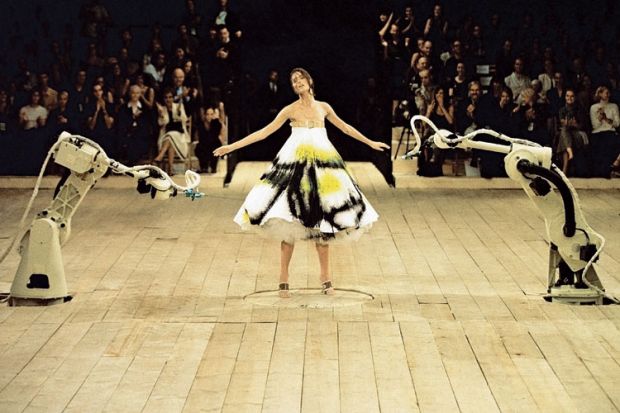From Saturday clubs for teenagers to major exhibitions and the dynamic King’s Cross Knowledge Quarter, a conference has celebrated the results of the synergies between universities, cultural institutions and the creative arts that can be seen all around us.
Held at the Guildhall School of Music and Drama on 14 July, Culture, Creativity and the Academy: Exploring the New Normal was organised by the Culture Capital Exchange, a membership network of higher education institutions.
Although it was now celebrating its 10th anniversary, said director Evelyn Wilson, it remained true to its “core remit of finding ways to bring together the worlds of higher education and the creative arts”. Yet, unlike a decade ago, such collaborations were now “the new normal”.
Bill Sherman, rather unusually, bridges the gap between the two worlds, serving as both head of research at the Victoria and Albert Museum and as professor of Renaissance studies at the University of York.
The Alexander McQueen: Savage Beauty exhibition has proved the most popular in the museum’s history and will open 24 hours a day for the final two weekends before it closes on 2 August. Yet Professor Sherman said that it could have happened only through a collaboration with the London College of Fashion as well as the late designer’s own company and the Metropolitan Museum of Art in New York.
Gavin Henderson, principal of the Royal Central School of Speech and Drama, argued that “the enterprise culture of Mrs Thatcher’s 1980s, much as she would have hated the idea, emerged from the art schools of the 1960s”.
He agreed with the recent comment by Sir Peter Bazalgette, chair of Arts Council England, that the size of Britain’s creative industries could and should double over the next five years. And he described the scale of the partnerships that he is building in Colombia after attending the Latin American Festival of Theatre in Bogotá.
For Heather Williams, knowledge exchange strategy and development manager at the Arts and Humanities Research Council, we have now gone beyond “the idea of having a separate breed of researchers who do knowledge exchange” and were leaving “many other countries about 10 years behind”. Meanwhile, universities had learned to retain their intellectual property, rather than transferring it to small spin-off companies which were subsequently bought out.
Yet others sounded a more cautionary note. In a keynote address, John Newbigin, chair of Creative England (and visiting professor at the University of East London), acknowledged that universities were now “a sort of Petri dish in which delicate little cells of creativity can be nurtured towards becoming viable sustainable organisms”.
But although it sometimes seemed as if “the whole world is in love with universities”, technological developments were undermining their traditional authority and disciplinary structures rather in the way that vernacular translations of the Bible once undermined the authority of the Church. And the result of that, Professor Newbigin told delegates, “was not a ‘new normal’ but 200 years of chaos, wars, paranoia and the Inquisition before a new equilibrium could establish itself in Europe”.
Another salutary reminder came from Lydia Fraser-Ward, director of Fantasy High Street, which creates outdoor events such as a fairy village in Crystal Palace, south London. Despite her own experiences of successful collaborations, she pointed out, universities could still seem “very impenetrable” to many small businesses and individual artists.
POSTSCRIPT:
Print headline: University/art collaborations are now ‘the new normal’
Register to continue
Why register?
- Registration is free and only takes a moment
- Once registered, you can read 3 articles a month
- Sign up for our newsletter
Subscribe
Or subscribe for unlimited access to:
- Unlimited access to news, views, insights & reviews
- Digital editions
- Digital access to THE’s university and college rankings analysis
Already registered or a current subscriber? Login





